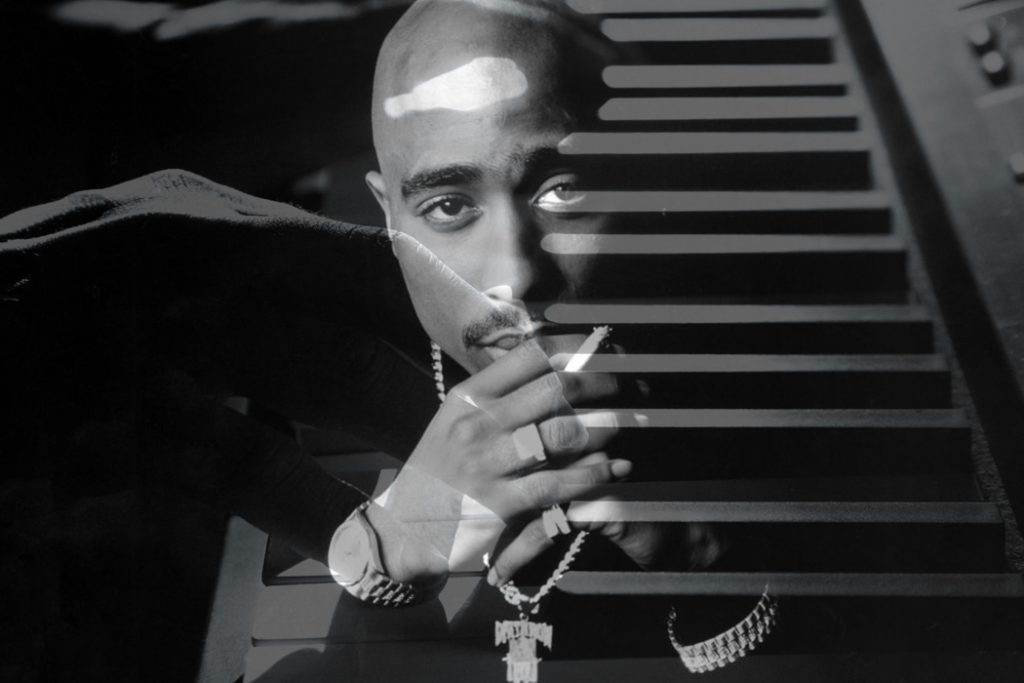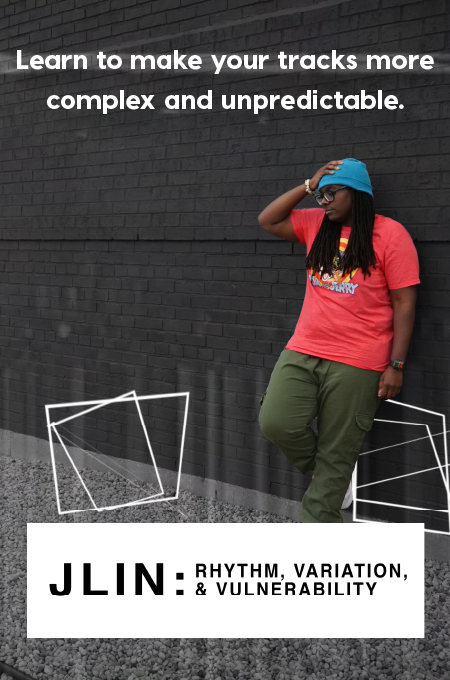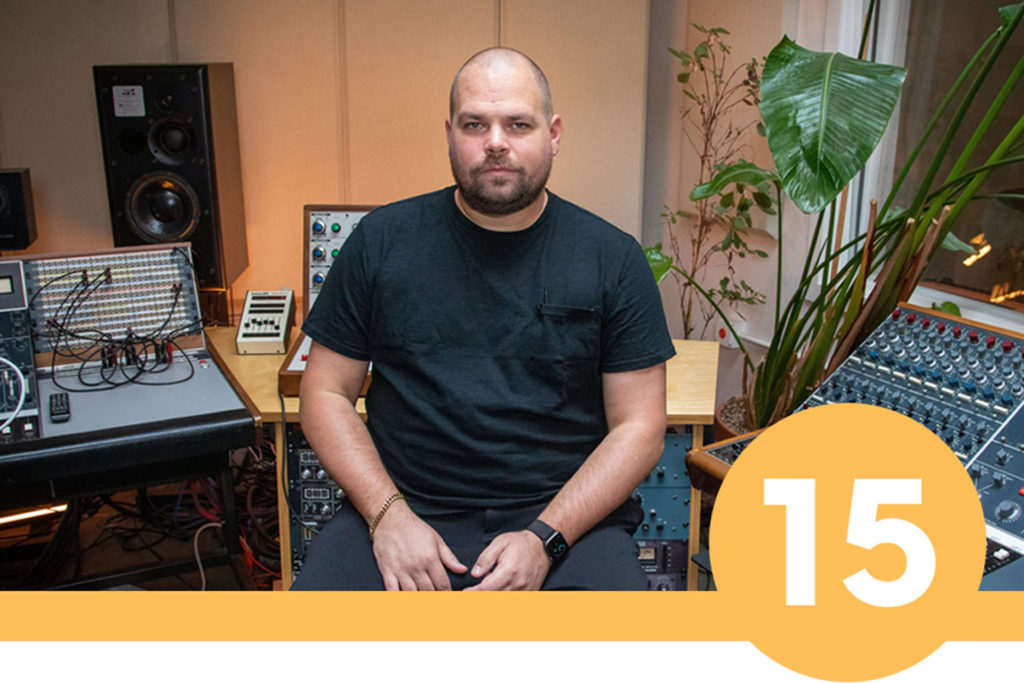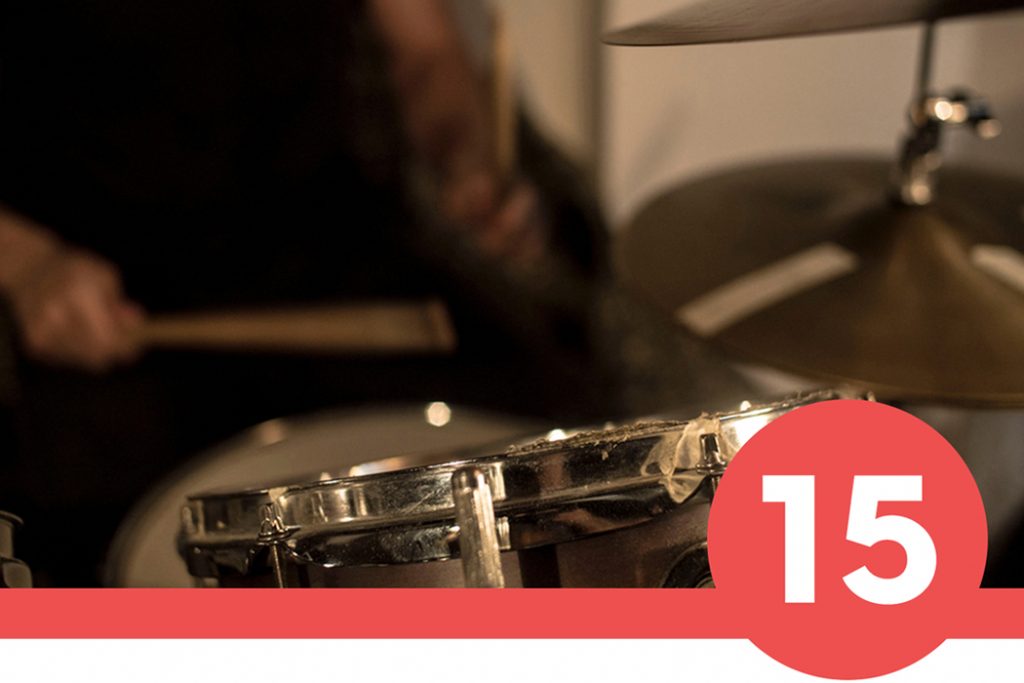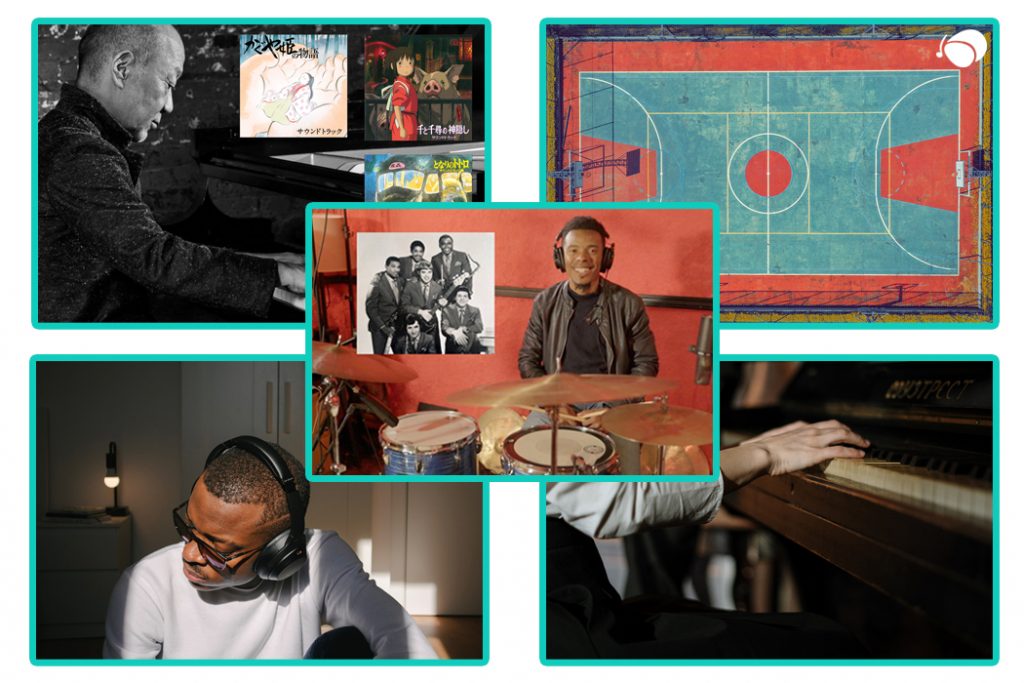+ Take your modern jazz piano and hip-hop beat making to new heights with Soundfly’s new course, Elijah Fox: Impressionist Piano & Production!
Hip-hop is officially pop music.
With Bruno Mars and Kendrick Lamar’s sweep of the Grammy Awards earlier this year, it’s evident that hip-hop has officially shed its status as “that controversial music genre” that prompted the Grammys’ organizers to refuse to air any rap categories back in 1989, which subsequently prompted some to boycott the event. In fact, the categories of “Album of the Year” and “Record of the Year” were both dominated by hip-hop artists and artists who are clearly heavily influenced by hip-hop production. I can’t remember another year in which three rappers (Jay-Z, Childish Gambino, Kendrick Lamar) were nominated for both of these categories.
Mars’ “24K Magic” was the night’s obvious winner, taking home six awards, but it was Lamar who represented hip-hop’s biggest winner. And his opening performance, which is quite possibly his most profound and polarizing to date, was also one of the most radically political performances to ever appear on a nationally televised broadcast. In the almost 30 years since the Grammys refused to air rap categories on TV, rap as a genre has itself evolved, and is now also responsible for ushering along the evolution of much, much older instruments and playing techniques in its wake.
Musically, this evolution can be traced by changes in production, lyrical content, and the rhythmic cadences (or flow) of rappers. In the genre’s early days, beat production typically consisted of drum machines playing looped patterns and samples of funk and disco records. By the late ’80s and early ’90s though, producers had access to audio samplers that could adequately function creatively as instruments (E-mu’s SP-1200, Akai’s MPC, Roland’s SP series, and more). This allowed the producers to be more experimental and innovative in their approach to constructing tracks.
By the mid-1990s, it became a bit harder to release sample-based music because of all the legal suits that took the wind out of many producers’ sails. And while this likely halted a very interesting movement that could’ve gone to some extreme, unknown places, it did positively lead producers to start creating more original music to “sample” themselves, relying less on other artists’ copyrights. Sampling is still a common practice today, it’s just that labels are forced to seek costly permissions from the original rights holders in order to publish works that contain samples. But original musical composition in hip-hop beats has inevitably risen to incredible heights and now clearly influences the way artists write and produce music in genres much older than hip-hop itself, like jazz, musical theater, and all kinds of music from around the world.
One instrument that has remained a constant in some of hip-hop’s biggest hits is the piano. As unlikely as it sounds, you can go back to any year since 1987 and find a popular hip-hop song that features the piano cleanly or electronically processed as the primary melodic instrument. Why that is is probably a question without an answer, but it is somewhat fitting considering that basically every popular and influential American musical form of the past 150 years has featured the piano as at least one of the prominent compositional and performative instruments. Hip-hop is simply the next vessel moving along the evolution of an instrument that has single-handedly changed the way musicians put music to paper, shellac, tape, or bytes.
Think about the ragtime elegance of Jelly Roll Morton, the blues shuffle of Pinetop Perkins, the quick strides of Art Tatum, the signature early rock bounce of Fats Domino, or Elton John’s arpeggiated pop anthems. It’s clear that all of these musicians used the piano in ways that reflected the sounds of their eras, and innovated within the frame they were given as much as they could. Hip-hop beat producers such as Dr. Dre, Pharrell, J Dilla, Timbaland, and more, did just that — by cutting, splicing, and fitting the most emotive or funky slices of melody into tight grids and looping schemes to build a repetitive beat a rapper could rhyme over.
Having found new ways to continue etching out the piano’s legacy in a genre that’s more defined by recycling sounds than by playing instruments, hip-hop producers have given new life and offer new trajectories to this age-old instrument.
Looping is now common practice in almost every genre of music today, and inspired by hip-hop’s use of sampling, it has forced musicians of all kinds to find grandiose musical statements in short fragments. As a percussive instrument (after all, it does use hammers to make those pretty, delicate notes), the piano has finally been given its moment to operate more like a drum, syncopated within the beat.
But let’s let the songs do some of the talking now. Here are some classic 88-key occurrences that you’ll probably recognize instantly.
Songs with Sampled Piano
Slick Rick — “Children’s Story” (1988)
This classic number by Slick Rick features multiple piano parts that interject between what sounds like a cheap keyboard’s saxophone patch. I never really noticed how cheesy the main keyboard pad sounds because of all of the cool bass lines and riffs that come in and out. Although the beat is pretty bare, it’s the piano that gives this song its bounce in its sparseness. The song interpolates the bass line from Bob James’ ethereal jazz classic, “Nautilus,” which has been sampled in songs by RUN DMC, A Tribe Called Quest, Ice-T, Wu-Tang Clan, and about 300 others.
Biz Markie — “Just a Friend” (1989)
Biz Markie’s remake of Freddie Scott’s “You Got What I Need” is the quintessential guy meets girl, guy likes girl, girl likes another guy song. Although it was his biggest and maybe only hit, this gem features a signature piano riff that makes the song irresistibly catchy. Unlike the “decorative” use of the piano in the above example, this entire song is just a piano sample and drums, proving that sometimes all you need is the piano and a fat beat.
Naughty by Nature — “O.P.P.” (1991)
Arguably Naughty by Nature’s biggest hit and one of the biggest acronyms and double entendres in early hip-hop, this track flips the Jackson Five’s “ABC” into a funky ode to infidelity. The piano riff comes straight from the Jackson Five song mixed with Melvin Bliss’ “Synthetic Substitution.” The song was one of the biggest hits of 1991 and was one of the first rap songs to become a veritable pop hit.
Wu Tang Clan — “C.R.E.A.M” (1993)
Probably one of Wu Tang Clan’s most iconic songs, this tale of the everyman’s pursuit of money and the finer things is a grim retrospective on modern societal ills. RZA’s sparse and almost cinematic production adds the perfect backdrop for the Clan’s rags-to-riches tale. The song samples and repurposes the piano riff and other parts of The Charmels’ 1967 song, “As Long as I’ve Got You.”
Nas — “The World Is Yours” (1994)
Nas’ debut Illmatic was a game changer for the rap world. Before this album, most rap records were produced by one or two producers, max. Nas changed everything by assembling a cast a very talented producers to craft his magnum opus. This particular track, produced by Pete Rock, samples jazz piano legend Ahmad Jamal’s song “I Love Music.” This is a great example of the complete transformation of a linear, meandering jazz piano tune being chopped up into only a few seconds and reimagined, yet it retains so much of the emotional backdrop it started out with.
2Pac — “I Ain’t Mad at Cha” (1996)
This song was one of the first hip-hop songs that I can remember hearing on the radio where the beat really just blew me away. The piano part comes from DeBarge’s “A Dream,” which was originally recorded on a keyboard, but producer Daz Dillinger reimagined the part on a traditional piano. The melody for this song was also used by Blackstreet for their song “Don’t Leave Me,” although slightly sped up from the original version. “I Ain’t Mad at Cha” was released as a single days after Tupac Shakur’s death and is one of his most powerful and heartfelt songs, partly due to the gospel feel of the piano.
2Pac’s other posthumously released piano-based ballad, “Changes”, borrows from the heartfelt passion of gospel music, and features a sample and rework of an original tune. This time, it’s Bruce Hornsby‘s “The Way It Is.”
Jay-Z — “Hard Knock Life” (1998)
This cut by Jay-Z features a sample of “It’s a Hard Knock Life” from the musical Annie, and, at the time of its release, was his most commercially successful single. This probably has a lot to do with the familiarity of the original song from Annie. An interesting note is that producer, The 45 King, programmed bass notes to go along with the sample, and if you listen to the second and third part of the bass line, the notes are actually wrong. Maybe that’s why Jay-Z starts the song off by saying “take the bass line out.” The staccato eighth note piano figure would become a staple in hip-hop production, as more producers would create songs using this type of rhythmic piano accompaniment (see below). This is a wonderful expression of the use of piano as a percussive element in the beat.
J Dilla — “Life (Instrumental)” (2003)
James Yancey, better known as J Dilla, has a deep library of amazing production. He’s worked with many artists and has been credited with changing the sound of modern drumming with his approach to programming on the MPC. However, it should also be noted how much he has influenced both pianists and producers in the way he arranged instrumental samples to create new and exciting tracks.
One of my favorite Dilla productions is “Life.” Originally produced for the late Detroit rapper Proof, the track features a sample of Bill Evans’ composition “Blue in Green.” Dilla’s superpower was his uncanny ability to pick out the most hypnotic, harmonic loops and perfect their cuts and placement so you can just listen for hours (no rapper needed). For more of these great piano based beats check out Vintage.
Songs with Original Piano Parts
Mary J. Blige — “Real Love” (1992)
It was in the ’90s when the worlds of R&B and hip-hop began to merge. Mary J. Blige was at the forefront of combining these sounds on her debut album, What’s the 411?. This album represented a change in the sonic landscape of popular music and “Real Love” features an incredibly funky, Stevie Wonder-style piano groove. The song speeds up the drum groove from Audio Two’s “Top Billin’” and producers Cory Rooney and Mark Morales fill out the tune with its signature piano loop.
Erykah Badu — “On & On” (1997)
Erykah Badu’s album, Baduzim, marked the beginning of the neo-soul movement that would later be solidified by her involvement in the Soulquarians in the late ’90s and early ’00s. “On & On” features a two-chord piano riff that provides the perfect backdrop for Badu’s eclectic and soulful lyrics, just minimal enough to let the synth bass bounce around and ground Badu’s diatonic singing. In other words, the piano chords roll “on and on.”
Lauryn Hill — “Doo Wop (That Thing)” (1998)
Here’s that staccato piano eighth note groove again. This single from Lauryn Hill’s debut album The Miseducation of Lauryn Hill features a very syncopated piano part. In addition to the main chordal element, the piano also provides a very funky bass line powering the music forward through the bars. And then a second bass line from an actual electric bass guitar syncopates around it in counterpoint! In this track, you begin to see how producers began to think more musically and create tracks that featured live musicians and original instrumental music.
Dr. Dre & Snoop Dogg — “Still Dre” (1999)
Dr. Dre will definitely go down as one of hip-hop’s most prolific producers. On this Scott Storch-assisted song off of Dr. Dre’s second album, 2001, Dre stakes his claim as being one of rap’s best producer/rappers. The song was featured in the movie Training Day which helped to propel 2001 to multi-platinum status. This song also features that same staccato eighth note piano part again that is starting to become dominant in hip-hop.
Nas — “I Can” (2002)
Nas has always straddled the line between street hustler and political poet. This track finds Nas in a very political space, using a looping interpretation of Beethoven’s “Für Elise” as the backdrop for his exposition of everything from the societal ills of the inner city to the history of ancient Africa. It’s yet another example of taking an extended linear piano composition and fragmenting it into a beat grid to recreate the way it flows in a cyclical manner.
Lupe Fiasco — “I Gotcha” (2006)
Lupe Fiasco has always made forward-thinking music. On his debut album, Food and Liquor, he enlisted the help of some major producers. On this Neptunes-assisted track, Fiasco weaves intricate metaphors about everything from tempura to soap, but it’s centered around an arpeggiated chord progression on the piano with some synth stabs to accent the chords.
Kanye West — “Love Lockdown” (2008)
Despite Kanye West making more headlines for his political leanings these days, his music has always been innovative enough to stand the test of time. Back in 2008, most people couldn’t have imagined the direction that hip-hop would inevitably take, but West’s groundbreaking 808s and Heartbreak helped to lay that foundation, whether in sampling production, his synth-laden instrumentals, or Auto-Tune. One of the most striking elements of the production on many of the tracks on this album is the minimalism — “Love Lockdown” features a very simple Nina Simone-style piano riff that repeats throughout the entire song, only being fortified by African drums and 808s.
Kendrick Lamar — “HUMBLE.” (2017)
This single-finger-playable piano groove locks in tightly with the drum machine beat and offers an incredibly funky syncopation. If it weren’t for the trap-style sub bass sine wave offering a kind of horror-style eeriness to the track, this would be one of the funkiest songs around.
This is by no means a complete list, as we wanted to highlight some of the more popular and influential tracks to have used the piano as a backdrop to the beat. Share your favorites with us in the comments below.
Play Your Heart Out!
Continue your learning adventure on Soundfly with modern, creative courses on songwriting, mixing, production, composing, synths, beats, and more by artists like Kiefer, Kimbra, Com Truise, Jlin, Ryan Lott, RJD2, and our newly launched Elijah Fox: Impressionist Piano & Production.
